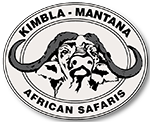“In this world of mass marketing the individual is sometimes lost. On my trip to Africa for 10 weeks this never occurred … my every wish became a reality”
Ruaha National Park & Selous National Reserve
Ruaha national park is located in central Tanzania in the western highlands of Iringa. It covers an area of 4,920 square miles (12,745 sq km) and takes its name from the Ruaha River, which winds through the eastern zone at the bottom of the Rift Valley. The valley of the Ruaha River is an extension of the Great Rift Valley and stretches for 100 miles (161 km) along the east, through rugged gorges and vast plains. The vegetational zones are diverse and include vast plains, marshes and dense forests and beyond the north valley huge baobab trees. In Ruaha, all the usual wildlife can be found in great numbers but it is also possible to see rarer wildlife such as the African wild dogs. The Ruaha national park is one of the best preserved parks of Tanzania.
Selous national reserve is located in the south of Tanzania, about 155 miles (250 km) from the capital, Dar-es-Salaam. Selous is the largest reserve in Africa at 20,900 square miles (54,130 sq km) which is roughly the size of Denmark! The Selous has the biggest river basin in East Africa, the Rufiji basin, and is crossed by many rivers and tributaries many of which feed this huge system. These rivers, the Great Ruaha, the Rufiji, the Kilombero and the Luwegu River and their surrounding areas with its abundance of water and variety of ecosystems and which contain savannah grasslands, forests, grasslands, marshes and rocky canyons are home to an abundance of wildlife. There are large concentrations of elephant with many impressively large herds. Boat trips on the Rufiji River are a pleasant way to view mammals and birds. Selous is accessed by scheduled flight to the northern part of the reserve.



